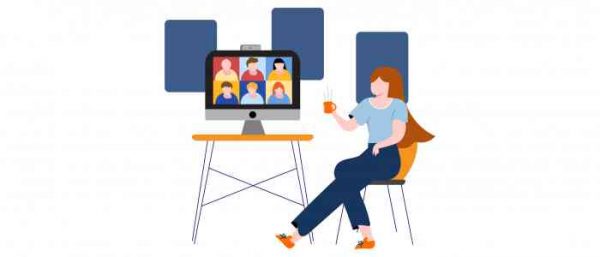This week, we explore the latest in Hybrid Workspace thought leadership, from chartered occupational psychologist, Dr Gwenllian Williams. With over 20 years’ experience in business consulting and a PHD in Psychology from the University of Stirling, Dr Williams has the perfect blend of knowledge and experience necessary to offer a unique insight into the psychology of work – and to infer how an appreciation for humanity’s wider context and genetic makeup can illuminate our view of the modern workplace.
Her latest piece” ‘Out of sight is out of mind. Five visibility essentials in the new normal’, explores how the benefits and challenges of hybrid working are shaped by the unconscious human psyche. She also asserts how leaders can adapt their approach to avoid and alleviate the stresses of the ‘new normal’, whilst giving workers the visibility they need to feel valued and empowered.
The Convergence of the Physical and Digital
A reoccurring challenge at the center of Dr Williams’ argument is the need for leaders to in some way “try to converge the physical and digital workspace”. We see this as the linchpin of any hybrid workplace strategy. In order to harness the flexibility and autonomy that attracts teams to a hybrid model, organisations must adopt a remote first approach where all communications are facilitated digitally, whilst also giving home workers the tools they need to feel as empowered as those in the office environment.
The physical spaces that companies choose to maintain must have a clear value in their differentiation from home working. Brick and mortar offices must provide immersive environments, able to entice teams to occasionally travel from their homes for in-person ideation and brainstorming sessions, when safely achievable. Above all, these environments need to be cohesively linked digital workspaces, with immediate access to productivity tools, content and digital whiteboard designs, from any location. All of this allows businesses to “maintain collaboration, collegiality and creativity” to quote Dr Williams.

Visibility – How Humanity has Evolved
Interestingly, Dr Williams reflects on our desire for face-to-face interactions as both humanity’s winning trait in the evolutionary race and our weakness in more modern times. “We like to look at other human faces, we like to work in groups and talk. We get a sense of other humans by being in their company. We call it intuition.” Dr Williams claims that the danger of Hybrid is that we miss out on these sensory experiences, as workers are excluded from conversations, decisions, and informal coaching – not because they are deliberately ignored but simply because they are not in the office that day.
Missing out on these experiences can cause alienation, anxiety, and a loss of creativity, as workers feel less willing to share, build and critique together. For organisations to combat this potential dip in the fluidity of collaborative tasks, leaders must use technology to bridge the gap and ensure that workers are constantly stimulated in a human way, one which conventional solutions often lack.
What Leaders can do
Dr Williams believes that above all, leaders must harness and drive our new-formed comfort with technology to ensure that home-working team members feel they have visibility and voice in the office. This means more than putting all on a ‘Zoom’ or ‘Teams’ which has improved speed of communication but not so much collaboration other than document sharing. It means investing in and using technology to drive visibility of face, of word, of ideas, of output. Technology with hybrid at its heart.
For remote workers to participate on equal footing to those in the office, they need to be given the right tools to contribute to discussions intuitively. Too often, remote work experiences can be limited by inadequate hardware and small screen experiences which limit teams to reviewing a single screen or document at any one time.
To remedy the limitations of these small-screen meeting experiences, leaders need to empower remote workers with the ability to contribute to meeting discussions using multiple devices. Join video calls via smartphone and review documents on your laptop as you add to whiteboard discussions on your tablet.
Organisations must also nurture an environment where it is not the loudest voice that prevails, but simply the best idea. All workers need the ability to share their ideas in real-time, without fear of interruption. To enable this, teams need collaboration tools which do not favour a dominant speaker but give equal share of voice to all participants.
Ideally, video meetings should be supplements with real-time collaboration tools such as digital whiteboards, allowing remote workers to spontaneously brainstorm and submit ideas on an equal footing with their office-based colleagues.
How Laduma can help
At Laduma, we believe that the new breed of Hybrid Workforce needs a new breed of Hybrid Workspace. One singular platform where you can bring all your favourite applications and tools with you to do your best work together.
Teams need to work fast, efficiently and with freedom, having access to the tools they need in one place. With the help of Laduma, you can pull meetings, notes, reminders and specialist tools into one central platform for frictionless collaboration from any location.
To find out more about how we can help you improve the visibility of your hybrid workforce, take a read of our comprehensive hybrid workspace insight guide
